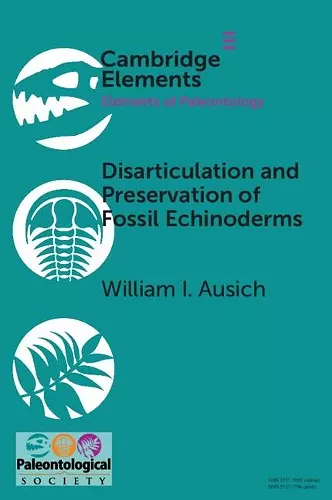Disarticulation and Preservation of Fossil Echinoderms: Recognition of Ecological-Time Information in the Echinoderm Fossil Record
Format:Paperback
Publisher:Cambridge University Press
Published:11th Feb '21
Currently unavailable, and unfortunately no date known when it will be back

Echinoderm preservation provides a window into the fossil record in which ecological-time processes can be addressed.
The time-sensitivity and predictability of echinoderm disarticulation makes them model organisms to determine post-mortem transportation and allows recognition of ecological-time data within paleocommunity accumulations. The patterns present in crinoids and echinoids can be used to develop a more thorough understanding of all echinoderm clades.The history of life on earth is largely reconstructed from time-averaged accumulations of fossils. A glimpse at ecologic-time attributes and processes is relatively rare. However, the time-sensitive and predictability of echinoderm disarticulation makes them model organisms to determine post-mortem transportation and allows recognition of ecological-time data within paleocommunity accumulations. Unlike many other fossil groups, this has allowed research on many aspects of echinoderms and their paleocommunities, such as the distribution of soft tissues, assessment of the amount of fossil transportation prior to burial, determination of intraspecific variation, paleocommunity composition, estimation of relative abundance of taxa in paleocommunities, determination of attributes of niche differentiation, etc. Crinoids and echinoids have received the most amount of taphonomic research, and the patterns present in these two groups can be used to develop a more thorough understanding of all echinoderm clades.
ISBN: 9781108789806
Dimensions: 150mm x 230mm x 4mm
Weight: 100g
75 pages